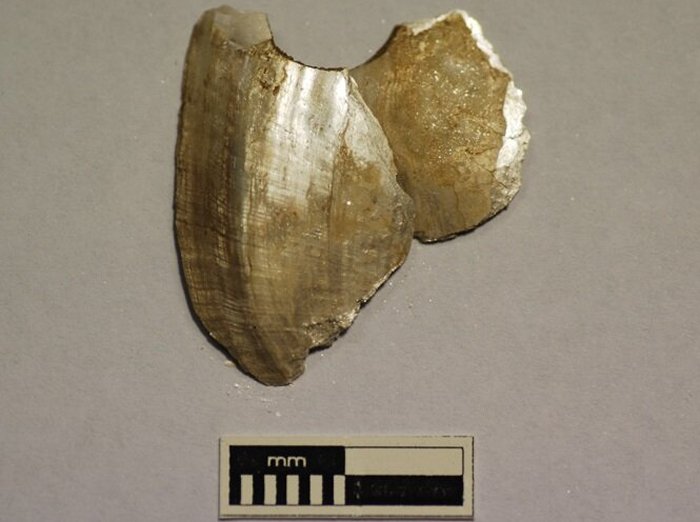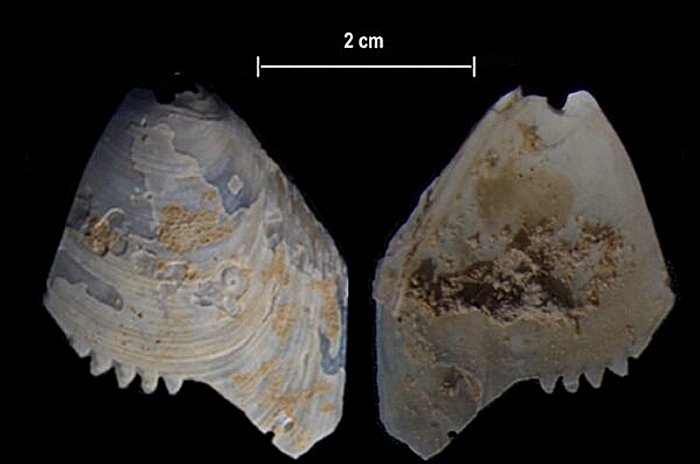Conny Waters – AncientPages.com – New research by archaeologists has described rare shell artifacts discovered at Calperum Station and Murrawong (Glen Lossie) on the Murray River in South Australia.
The artifacts were found in sites known to archaeologists as shell middens during field trips by Flinders and Griffith University scientists, in collaboration with the River Murray and Mallee Aboriginal Corporation and the Ngarrindjeri Aboriginal Corporation.

Perforated shell artifact from Murrawong (Glen Lossie) on the Lower Murray River in South Australia. Credit: Flinders University
Two of the modified freshwater mussel shells are perforated, with the other is serrated. The authors say the finely serrated shell is a very rare artifact with few close Australian examples known to exist.
The discoveries range in age from around 6000 to 600 years old and more than double the known examples of such artifacts from this region.
Professor Amy Roberts at Flinders University, the lead author of the paper, says that whilst midden sites are a common type in many parts of the country, shell artifacts are rarely identified within them.
“These artifacts remind us that middens are not only the remnants of meals eaten long ago, but that they also provide insights into Aboriginal technologies and cultural activities. It’s a remarkable object to look at, but also highly enigmatic.”

Serrated shell artefact from Calperum Station in South Australia’s Riverland region. Perforated shell artefact from Calperum Station in South Australia’s Riverland region. Credit: Flinders University
In over 25 years of recording archaeological sites in the Riverland, including many hundreds of shell middens, co-author Craig Westell says he has never come across an object like the serrated artifact.
Potential uses for the perforated shells include ornamentation, tool stringing and fiber scraping while the serrated artifact may have been used for ornamentation, idle tinkering, or as a food utensil.
Dr. Chris Wilson, a Ngarrindjeri archaeologist, says accounts about the use of shell recorded from Aboriginal Elders who lived along the Murray River opened space for the team to think about the functional, symbolic, and aesthetic importance of these objects.
“This recent shell finds confirm that our Ancestors not only made utensils and tools for everyday use, but they were also gifted with making artistic pieces using any materials that were readily available.”
“The research that Amy and her team do in partnership with the First Peoples of the River Murray and Mallee has been much appreciated, their research gives us more accurate details of our Ancestral history within the Riverland,” says River Murray and Mallee Aboriginal Corporation spokesperson Fiona Giles.”
Paper
Written by Conny Waters – AncientPages.com Staff Writer





